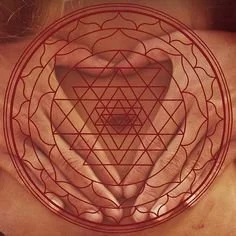Imagery:inspiration for postpartum & beyond
In today's fast-paced and interconnected world, we are constantly bombarded with news stories, both positive and negative, through various media outlets. While the content we consume can greatly shape our perspectives, it is often the emotional impact that leaves a lasting impression. As an empathetic person, I have personally experienced the profound influence that negative images can have on my well-being. However, through my journey, I have discovered the transformative power of positive images and color therapy as tools for healing and emotional preparation during pregnancy and postpartum.
The Impact of Negative Images:
When we encounter negative news stories or distressing content on television or social media, the emotional toll can be significant. As an empath, such encounters resonate deeply within us, affecting our emotions and overall mental health. Thus, it becomes crucial to recognize and address the impact of these negative images in order to protect our well-being.
The Healing Power of Positive Images:
One way to counter the adverse effects of negative images is by consciously seeking out and surrounding ourselves with positive visuals. Positive images have the capacity to evoke feelings of joy, hope, and inspiration, effectively countering the heaviness we may feel from negative images. By intentionally exposing ourselves to uplifting content, we can improve our mood, reduce stress, and ultimately enhance our overall emotional well-being.
3. Color Therapy and Emotional Preparation:
Moreover, color therapy is emerging as a valuable technique for emotional healing and preparation during significant life experiences. During the process of labor and delivery, for instance, the use of specific colors can help promote relaxation, reduce anxiety, and foster a positive mindset. By incorporating color therapy techniques, expectant mothers can create visually stimulating environments that aid in their emotional preparedness for childbirth.
4. Extending the Benefits into Postpartum:
The benefits of positive images and color therapy should not end with childbirth. Transitioning into the postpartum period can bring its own set of emotional challenges. By continuing to utilize positive visuals, such as photographs, artwork, or even nature, new moms can uplift their mood, restore inner balance, and promote a nurturing environment for both themselves and their newborns.
Conclusion:
In a world dominated by news cycles and social media, it is increasingly important to be aware of the emotional impact of the content we consume. As empathetic individuals, negative images can deeply affect us, but we can take proactive steps to protect our well-being. By consciously incorporating positive images and integrating color therapy into our lives, we can counterbalance the negativity, promote emotional healing, and better prepare ourselves for transformative life experiences, such as labor and delivery, and the postpartum journey. Remember, it is not just about what we read; it is about what we feel when we see something.
In an article from John Hopkins University about Imagery it states “The mind is a powerful healing tool. Imagery (visualization) has harnessed the power of the mind through various therapies for centuries. By creating images in your mind, you can reduce pain and other symptoms tied to your condition.” Imagery or visualization can help a new mother head into labor and delivery and postpartum with a positive, empowered outlook.
5 Imagery Types
Visual Imagery:
Visual imagery involves the use of mental images or pictures to promote relaxation and healing. For postpartum care, mothers can close their eyes and visualize themselves in a serene and peaceful environment. This practice helps reduce stress and anxiety, allowing the body to heal more effectively.
Auditory Imagery:
Sound has a profound impact on our well-being. Mothers can benefit from auditory imagery by listening to calming sounds like flowing water, gentle wind, or soothing music. Incorporating these sounds into their postpartum routine can create a soothing atmosphere, promoting relaxation and tranquility.
Tactile Imagery:
Tactile imagery focuses on the sensation of touch. Encourage postpartum mothers to engage in self-massage using Ayurvedic oils. The act of massaging the body not only nurtures the physical body but also fosters a deep connection with oneself, aiding in the recovery process.
Gustatory Imagery:
Gustatory imagery involves focusing on the sense of taste. Ayurveda places a strong emphasis on nutrition, especially during the postpartum period. Mothers can incorporate imagery by savoring the tastes and textures of nourishing foods, helping to balance their doshas and restore vitality.
Olfactory Imagery:
The sense of smell is a powerful tool for relaxation and healing. Aromatherapy with Ayurvedic essential oils can be used to create a nurturing environment. Scents like lavender, rose, and sandalwood can promote emotional well-being and balance during the postpartum period.
Try incorporating one or all of these imagery types during postpartum and into Motherhood and see what comes up for you!








